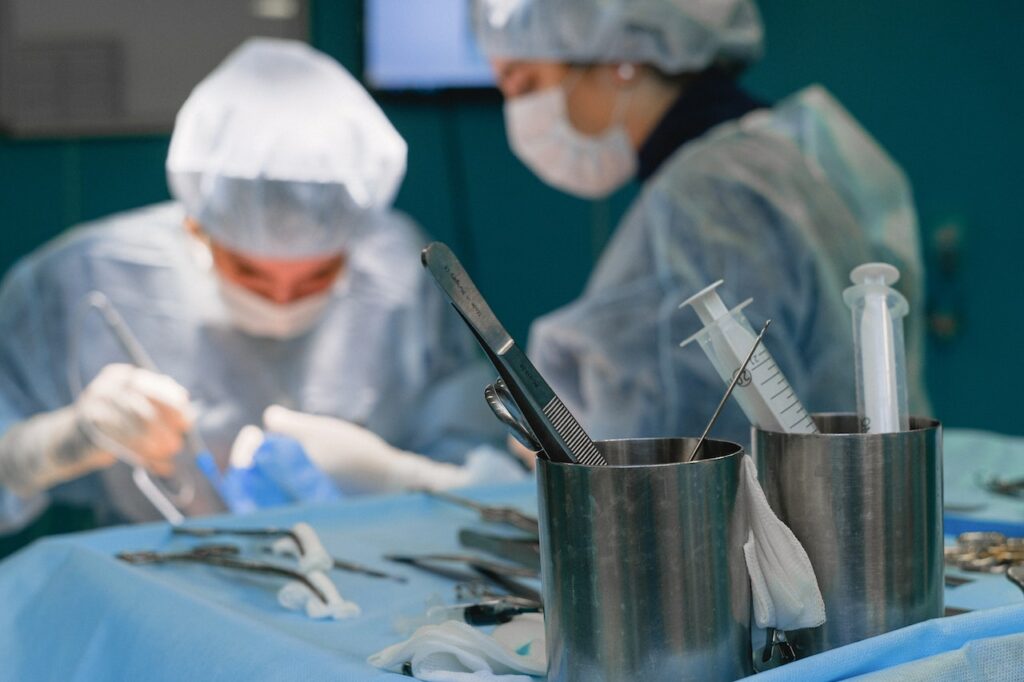Gynecomastia surgery recovery can vary from person to person depending on several factors. But there are certain things that can always be expected following this sort of surgery, and the timeline before you can get back to some activities will always be roughly the same.
During the course of this article, we plan to take an in-depth look at a post-gynecomastia surgery timeline. This will include what you can expect, when you can expect it, and how to deal with post-surgery recovery.
There are also a number of recommendations that should be followed in order to ensure a successful recovery, which we will also outline throughout this overview.
Gynecomastia Surgery Timeline
Gynecomastia surgery varies according to a number of factors – your gynecomastia grade and choice of surgeon can be two of the biggest variables in this equation, for instance. The type of anesthetic used also changes things.
However, there is a general timeline that you can expect to arise whether you’re having grade 1 or 4 gynecomastia surgery. Let’s take a look at the typical gynecomastia surgery timeline.
Pre-Op
Prior to the big day, you will have several appointments in order to have your pre-op photos taken and ensure that you’re properly prepared for surgery.
You may be given a compression vest during this time in addition to other items to help with surgical recovery.
Gynecomastia Surgery Day
You may be placed, according to the length and complexity of your gynecomastia surgery, under either local or general anesthetic.
Local anesthesia is usually used for those undergoing just liposuction (removing excess chest fat) and/or a small amount of gland tissue. If your surgeon is removing a large amount of breast gland tissue then general anesthesia may be used.
General Anesthetic
- Do not eat at all for 8 hours prior to your surgery.
- You are permitted to shower and shampoo your hair either the night before or the morning of your surgery. However, do not use any lotions or deodorant.
- Wear comfy, loose-fitting clothing, and a comfortable pair of flat shoes.
- Do not wear a watch or any other jewelry.
- Remove all piercings, dentures and contact lenses.
- Have someone drive you to and from the surgery – you will not be able to drive yourself. If you require assistance with this, you can speak to your surgeon’s office performing the operation.
- Bring a bag with you containing your essentials. This should include reading glasses (if you need them), all necessary paperwork, ID (driving license/passport etc.), a pair of warm socks, any medications you need, and a light snack in case of nausea following the surgery.
- Arrive at least an hour prior to surgery.
Local Anesthetic
Local anesthetic gynecomastia surgery should be treated as general anesthetic with the following exceptions:
- You can drive to your surgery, but someone must drive you back. If you take any medications that might affect your ability to drive, then do not drive at all.
- Take any medications that may have been prescribed by your surgeon prior to your surgery. These may include antibiotics and other medications.
Immediately following the surgery, your chest will be bandaged and a compression vest will be applied. You will be wearing this vest for a few weeks post surgery.

One Day Post-Surgery
One day after your gynecomastia surgery, you can expect the following:
- Your bandage will be removed, and you’ll be able to shower again within 1-2 days.
- You should limit your arm motion as much as possible. In particular, you should not raise your arms above chest level or engage in overhead lifting.
- If drains were placed during the surgery, they may be removed during this stage.
- After around 72 hours, you can start driving again.
6 Days Post-Surgery
Almost a week after surgery, a few more options will open up:
- If you have small children, you can pick them up and hold them again (assuming limited arm movement).
- You must still keep your arm motions limited so as to continue to promote healing.
- During a second post op visit, your incisions will be checked.
2 Week Post-Surgery
Light lower-body exercises may resume (exercise bicycle, squats etc.).
3-5 Weeks Post-Surgery
At this stage, patients can expect the following:
- An increased range of arm motion (care must still be taken).
- The compression vest can generally be discontinued around this time.
- Limited upper-body workouts may begin again.
10-12 Weeks Post-Op
Healing should be coming along nicely by this time. At this stage:
- The scars will be checked to ensure they are healing properly.
- The patient will be able to engage in any and all physical activity, even high-impact ones.
1 Year Post-Op
At this point, only a cursory examination is required:
- Scars will be checked to make sure they’ve healed over nicely and are skin-tone in color. Though the scars will largely be invisible at this point, they will continue to heal for another year.

How Should I Manage Gynecomastia Surgery Recovery?
Although the above gives a general overview of a post-gynecomastia-surgery timeline, it doesn’t account for everything that might happen after your surgery. Let’s take a more in-depth look.
Nausea is Possible
Though many surgeons will use an anesthetic that helps avoid nausea, the fact is that sometimes there’s no way around it. Pain medications and antibiotics are big culprits, particularly if not taken with food.
You may be prescribed anti-nausea meds to help with the problem. If they don’t help, then it may be worth abstaining from pain meds (if possible).
Hydration is Key
As part of your gynecomastia surgery recovery, it’s important that you stay properly hydrated. Drink plenty of fluids during the first few weeks following the surgery.
Limit Physical Exertion
Avoid strenuous activity for at least 2 weeks – no lifting, sex or exercise at all. It’s important to get up in the evening and do some light walking for around 15 minutes, however, to make sure your blood is circulating properly.
Showering
You shouldn’t shower at all for the first 2-3 days post surgery. After this it’s fine to shower, but your compression vest should be removed during showers.
You’ll have surgical tape on the incisions at this stage – this should be left on, and it’s fine to get it wet.
Driving
You shouldn’t drive at all for three days. If you continue with pain medication after that point, you should continue not to drive until the pain medication is discontinued.
Incision Management
The incisions made for gynecomastia surgery will be sutured. Your surgeon will often use sutures that dissolve by themselves. Surgical tape is usually then placed on the incisions.
Aspirin
Aspirin is a blood thinner, and so shouldn’t be used for at least a week. Tylenol or prescription pain meds can be used as normal.
Work
If you work in an office or from home, it’s possible to resume work within 3 days. If you work a more physical job, however, it can take a little longer.
Depending on the physical intensity of your job, it can take up to 2 weeks before you can get back on the job. Your surgeon can provide a discreet doctor’s note (it needn’t state the nature of your surgery).
Exercise
As stated earlier, it takes time to return to exercise. Lower-body exercises can resume about 2 weeks after your surgery, and it will be about 6-8 weeks before you can do any upper-body exercise at all. After 3 months, you can do any and all exercises you like, including high-impact ones.
It’s important to note that if there is any discomfort in your chest as a result of exercise, you’re overdoing it. The important thing is to take it slow.

Medication
Take all medications as prescribed. If any adverse effects arise, you should contact your surgeon immediately for advice. You should also check any new medication to ensure that there are no contraindications.
Exposure to Sunlight
Ideally, your incisions should not be exposed to direct sunlight for at least three months.
It is possible to expose the wounds to sunlight after 6 weeks (though not recommended). In this case, a sunscreen of at least SPF15 should be applied to the incisions.
Bruising
Post-surgery bruising may be perfectly normal and will resolve by itself.
What Else Can I Expect During Gynecomastia Surgery Recovery?
As you recover from Gynecomastia surgery, you may notice or experience the following:
Swelling in the Chest
A very common condition following gynecomastia surgery, mild swelling and tenderness in the area is a natural physiological response to trauma and is no cause for alarm. Swelling may happen for up to three months, and may be asymmetrical (one breast may be more swollen than the other).
Scarring and Scar Tissue
Ideally, your scars will fade and become virtually invisible around a year after surgery. Your doctor will continue to monitor your scars to see if any additional scar treatment is necessary.
Nipple Sensitivity
It’s possible that your nipples will be hypersensitive – or lose all sensitivity – for a few months. This is to be expected, and will pass in time.
After a few months, you may occasionally experience sharp shooting pains in your nipples for brief periods. This is a sign that the nerves in the area are healing, and is no cause for alarm.
Itching
Itching is quite common following surgical procedures, and is simply a by-product of the body healing itself. It’s important not to scratch the affected area, as you may rip open your incisions and complicate the healing process.
Gynecomastia Surgery Recovery: Frequently Asked Questions
Naturally, with a procedure as involved as gynecomastia surgery, there are bound to be many questions. Here are the most common that we haven’t already covered.
How Long Does it Take to Heal After Gynecomastia Surgery?
Although you will generally feel quite well within a few weeks, it takes about a year to fully recover. However, you can resume your normal life in about 4-6 weeks post surgery (with extensive exercise taking a bit longer).
How Long Do I Have to Wear a Compression Garment After Gynecomastia Surgery?
Your compression garment should be worn all the time (showers excluded) for at least 4 weeks. For optimal results, you should continue to wear it on a half-day basis for a further 2 weeks.
How Long Does Swelling Last After Gyno Surgery?
Assuming a compression garment is used, you should see swelling gradually decrease during the 4-6 weeks after gynecomastia surgery.
How Do You Sleep After Gynecomastia Surgery?
It’s important to sleep on your back for at least 3 days following your surgery. You should sleep at a 45-degree angle in order to promote healing and minimize discomfort of the area.
How Long After Gyno Surgery Can I Work Out?
It depends – lower-body exercises can be resumed about 2 weeks after surgery. Upper-body and more high-intensity activities cannot be done until around 2 months.
How Can You Shape Your Chest After Gynecomastia Surgery?
Once your chest is fully healed (again, this takes about 2 months), you can engage in chest exercises to help sculpt the area.
Exercises such as flys, bench presses and push-ups can promote muscle development in the chest. In general, cardio (such as running, swimming and HIIT) can help promote a more toned figure overall.
What Can You Not Do After Gyno Surgery?
As we’ve seen, the list is extensive – but temporary. Avoid strenuous use of the arms or chest for at least 2 months, and avoid anything that exposes the area to the sun (such as surfing or sunbathing) for the same period of time.

Gynecomastia Surgery Recovery Recap
Though gynecomastia surgery can seem like a scary prospect, the truth is that with the correct management you’ll soon be over the most uncomfortable aspects of it and will be able to quickly get back to your normal life.
However, as with any surgery, there are some quality-of-life considerations and recommendations that you should adhere to in order to expedite that process. Follow your surgeon’s advice & take care of your wounds, and you’ll soon be happier and more confident than ever.
